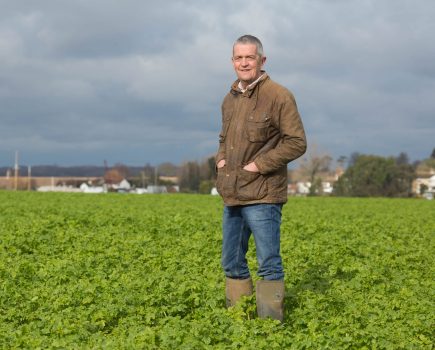 When asked why I chose journalism, my answer is always the same. Because being a journalist is like having a backstage pass to the world.
When asked why I chose journalism, my answer is always the same. Because being a journalist is like having a backstage pass to the world.
This month, this VIP pass took me to Norfolk to see John Deere’s latest combine, the X9, in action – something I’ve been looking forward to since hearing about the launch at Agritechnica last year, and mainly to see if the claims of 100t/hr were actually true.
After sitting in the cab while Deere’s latest beast leisurely munched through a ripe crop of wheat, I can confirm, the performance lives up to its on-paper claims, making for a pretty impressive combine – in my opinion. (Full details are featured within this month’s combine round-up, if you’re interested in finding out more)
When I tweeted a video showing the machine working, someone replied hastily that British ag can’t afford, nor does it need, such capacity in a combine.
Admittedly, at over £700,000 for the combine alone, (and another £124,000 for the header) the latest X9 isn’t pocket change, and when you look at those figures on paper, it really is jaw-dropping.
But what got me thinking was the point about too much capacity. Is there such thing as too much when it comes to capacity? And if there is, how do we know where to draw the line?
I ask this because the rhetoric at the moment is all about getting more from less. The industry seems to want machines that can push harder, achieve better, and do more in shorter time windows. So perhaps this combine – and others with similar capabilities – are just reacting to this.
At the host farm of the X9 open day, the farm manager told us they’d been looking to increase output for some time and had been waiting on something like the new X9 for the past five years.
With a need to get as much output as possible, but with the threat of a reducing number of people, it’s imperative for them from a business point of view to ensure the person on the seat is doing as much as possible.
A particular problem area for the farm arose when cutting OSR as they were historically limited by the rate in which the crop is fed into the existing combines.
The farm put the new launch to the test against two of its S690 combines in a 36ha field of OSR, and in three hours, the X9 had cut 17.8ha while the two S690’s had only managed 17.32ha between them – pretty impressive stuff.
To ensure it wasn’t a one-off, they trialled the combine in the same way with winter wheat and barley and the results were comparative.
It seems to me, that if you can make the finances work, you’ve got a clear business objective that seeks to target more output, and see a genuine tangible return, then an investment in something with greater capacity is a no-brainer.
21 Aug marked the passing of self-sufficiency day – the notional day in the calendar that the UK would run out of food if we were solely relying on British produce.
Though the nooks and crannies of post-Brexit trading still aren’t worked out, I think the general consensus is that there may well be a greater focus on domestic produce – rather than relying on expensive imports – so we may be foolhardy to shun innovation that allows us to do more. British agriculture is changing by the day, as is what it “needs”.
That said, I wholeheartedly agree that the cost involved with new kit such as this is truly frightening, and part of me wonders how long it’ll be before we see a combine make its way onto the market with a £1m price tag in tow. But let’s be frank, no one is forcing you to invest. However, having those tools available could become more important over the coming years, particularly for large-scale farms.
Any new launch will appeal to some and turn others off, but I think few can deny quite how impressive some of the technology coming on to the market at the moment is.
Looking forward to seeing where my backstage pass takes me next…
Originally hailing from Devon, Charlotte Cunningham is now based in Warwicks and when not busy filling the pages of CPM, can be found in the garden or exploring the countryside with two crazy spaniels in tow. charlie@cpm-magazine.co.uk @charcunningham




